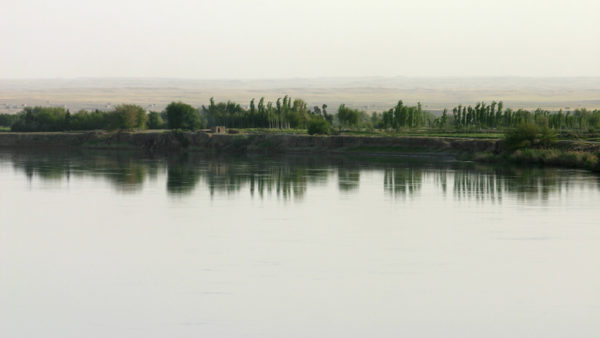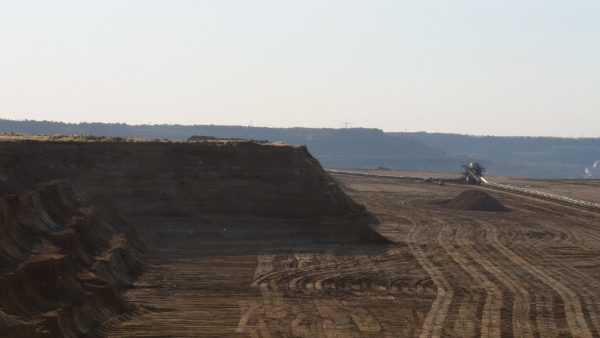The US could harvest 36TWh of clean energy a year, worth some $4bn in revenue, if states put solar panels on the highway interchange rights-of-way (ROW) they own, a study has concluded.
Most states have more than 200 miles (322km) of ROW at interchanges, around 127,500 acres in area, that is suitable for solar development, finds a new nationwide mapping tool developed by solar transport innovation group "The Ray" and the Webber Energy Group at the University of Texas, Austin.
For the first time, the tool offers states projections of how much solar power they could generate on their ROWs. As GCR first reported, the study began two years ago.
Putting solar arrays on these patches of unused land would boost America’s total solar power output, currently standing at 69TWh, by 56.5%.
It would also generate cash for states’ departments of transportation (DOTs), the researchers say.
• See the one in Georgia in action:
Â
‘So right, so smart’
"Interstate solar just makes sense," said Harriet Langford, founder and president of The Ray, which was set up in honour of her father, Ray C. Anderson. He founded the carpet-tile company, Interface, and became a champion of corporate environmentalism in the 1990s.
"Like my daddy used to say, this is ‘so right, so smart’," Langford added. "As our transportation systems become smarter and electrified, we will need more energy available, closer to the interstate and interstate exits, and more funding to support the infrastructure demands. By enabling renewable energy generation using the idle roadsides, our DOTs can help to fill this gap."
Their analysis found that most states have ROW solar potential in the hundreds of GWh per year. Texas, Illinois, California and Florida lead the pack with their potential for more than 1,500 GWh/yr each.
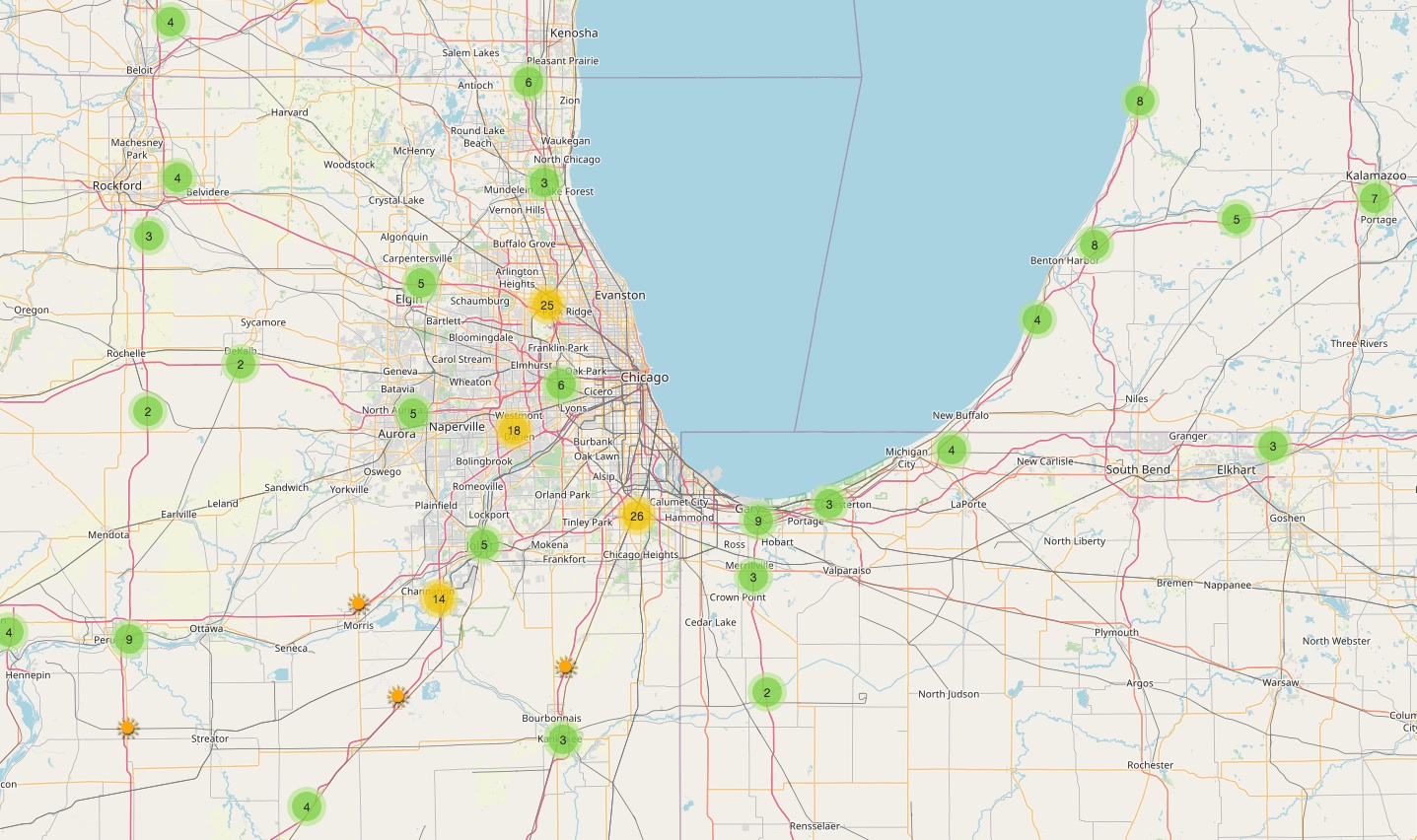
The zoomable mapping tool locates sites of interchange rights-of-way that could be developed for solar. The numbers indicate numbers of suitable sites. Illinois has strong potential (Webber Energy Group, UT Austin; The Ray)
California biggest winner
The league table gets shaken up when calculating the dollar value of this energy in each state, because retail prices for electricity vary widely among them.
The biggest winner here is California, which has the third largest overall potential to produce energy on ROWs, while enjoying the highest potential dollar-value of that energy thanks to its high average electricity prices.
"We have found that when stakeholders have unbiased information available to them, they can make energy decisions with a lot more clarity and confidence," said Michael Webber, professor of energy resources and mechanical engineering at UT Austin.Â
"That’s our goal with this study, to help people understand the potential for interstate solar so that policymakers, developers, and investors have a clearer view of the opportunity."Â
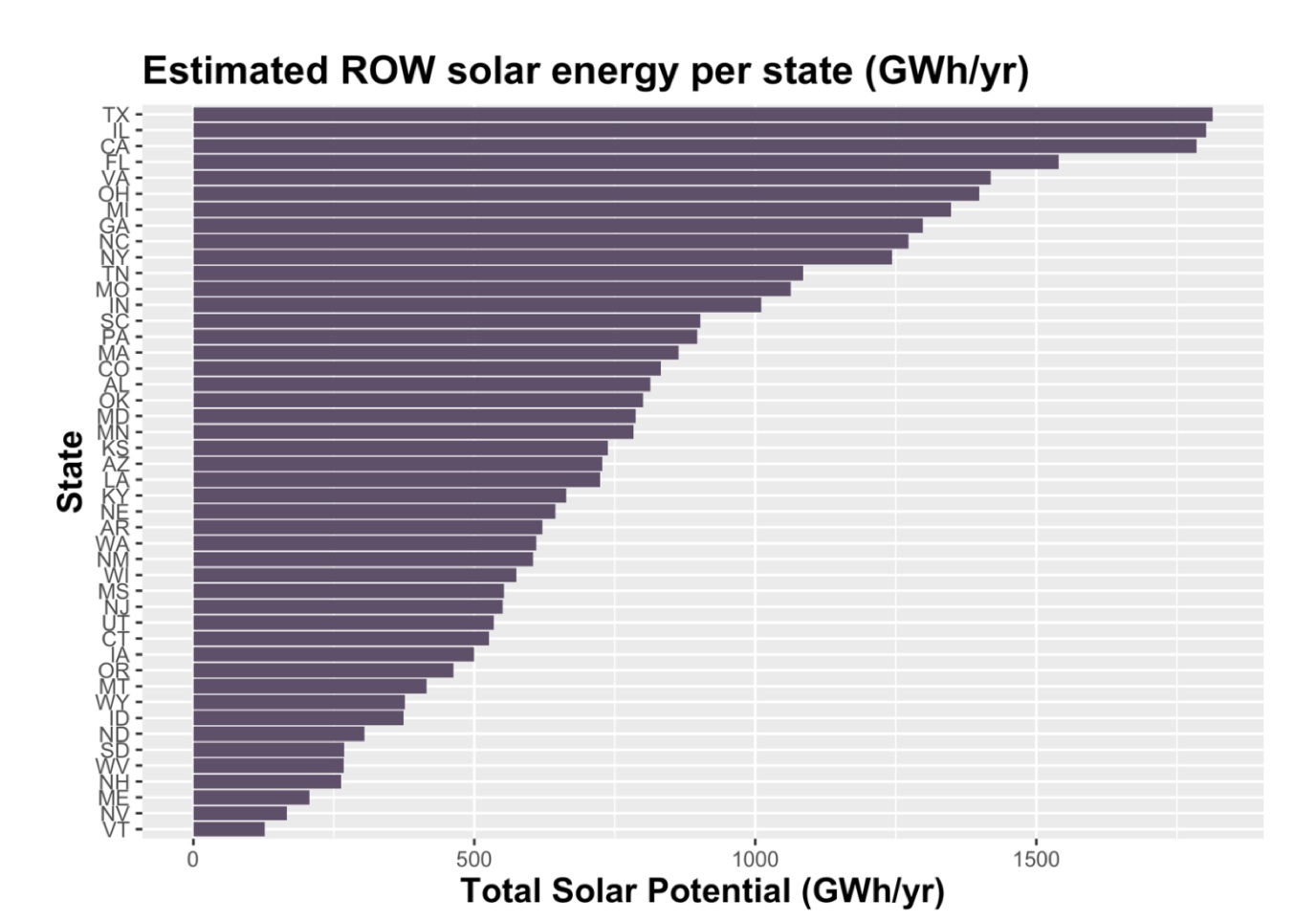
The potential solar energy (GWh/yr) states could generate on their suitable interchanges. Delaware and Rhode Island excluded (Webber Energy Group, UT Austin)
They’re already doing it
The idea has already caught on, as three states are using highway property for renewable energy.
In February this year, Georgia became the third when the Georgia Power Company commercialised a one-megawatt solar array on the ROW at Exit 14 off Interstate 85 (pictured), which is known as "The Ray Highway".
It has also piloted the use of native, flowering plants as ground cover within the array, making Georgia the first state in the nation to install pollinator-friendly ROW solar.Â
The Ray is now helping transportation operators in five other states to develop similar projects.
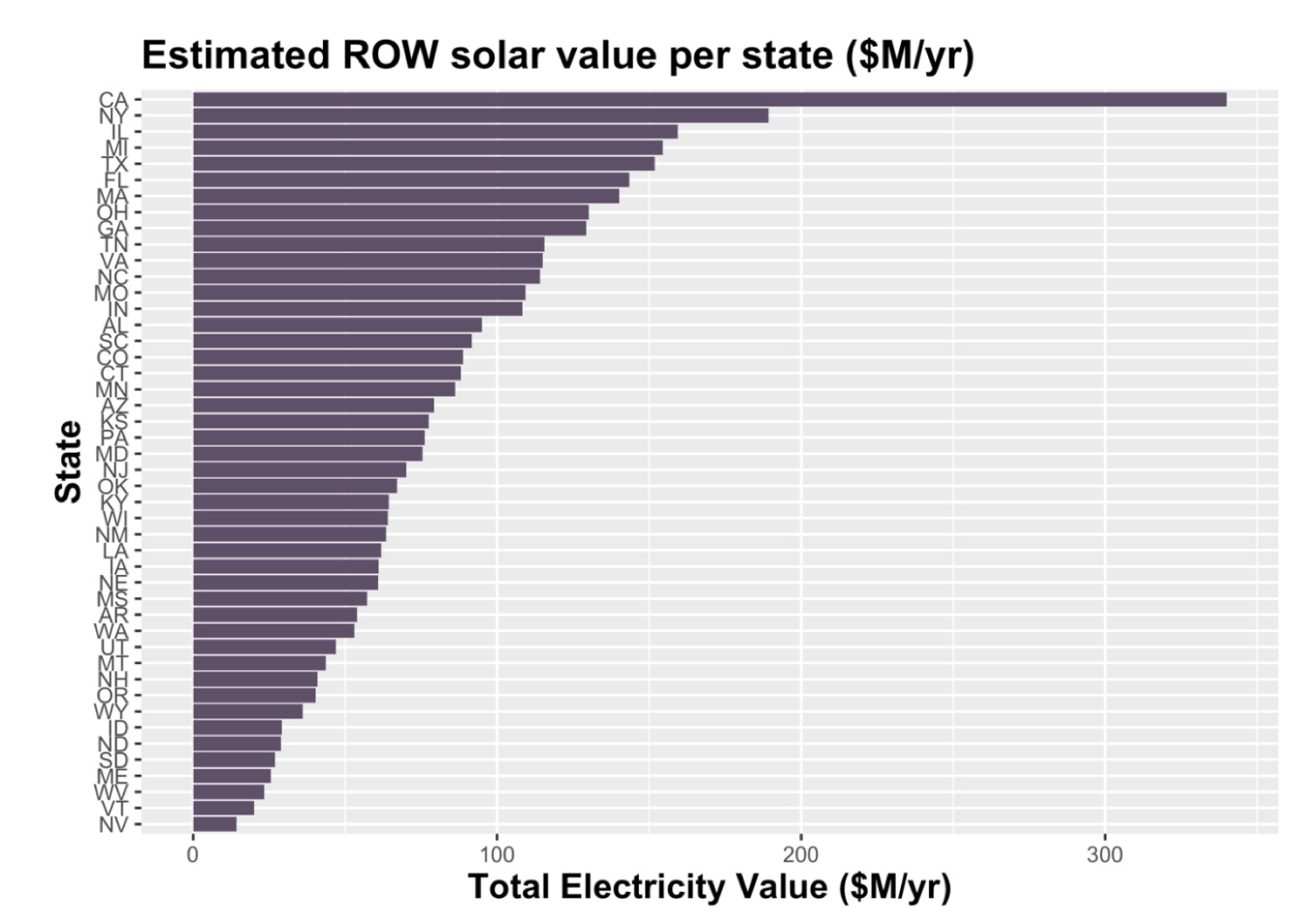
The potential energy value ($M/yr) if every state’s suitable interchanges were developed with solar. Delaware and Rhode Island excluded (Webber Energy Group, UT Austin)
States can’t lose
"On day one of these projects, state DOTs win," said Laura Rogers, director of strategic partnerships at The Ray, explaining that DOTs have various options in structuring ROW energy projects commercially.Â
She said: "State DOTs can own the renewable energy system and use or sell the clean energy generated, or they can work with a solar developer who owns the system and collect a land fee, while at the same time transferring land maintenance obligations to that developer.Â
"No matter how they decide to structure the deal, state DOTs win on all fronts by optimising underutilised land to generate clean renewable energy that benefits their communities, the environment, and their budgets."Â
Top photograph: Georgia Power Company commercialised a one-megawatt solar array at Exit 14 off Interstate 85 in February this year (Photograph courtesy of The Ray)
Related articles:





